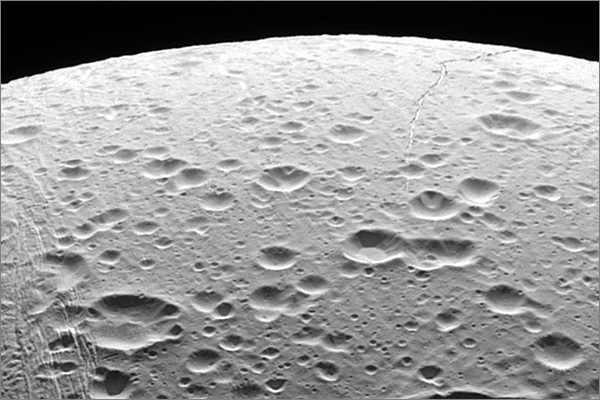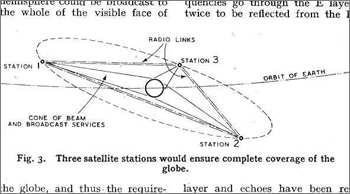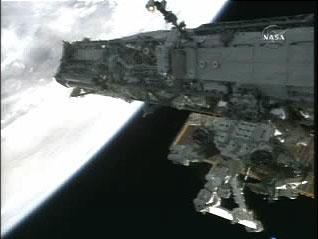Stilgherrian’s links for 26 May 2008 through 01 June 2008, gathered semi-automatically and covering a disturbing range of topics:
Continue reading “Links for 26 May 2008 through 01 June 2008”

Word-whore. I write 'em. I talk 'em. Information, politics, media, and the cybers. I drink. I use bad words. All publication is a political act. All communication is propaganda. All art is pornography. All business is personal. All hail Eris! Vive les poissons rouges sauvages!
Stilgherrian’s links for 26 May 2008 through 01 June 2008, gathered semi-automatically and covering a disturbing range of topics:
Continue reading “Links for 26 May 2008 through 01 June 2008”

Have I been too harsh on NASA? Last week the Cassini spacecraft zoomed past Saturn’s moon Enceladus and took these magnificent pictures. Hat-tip to the Bad Astronomy Blog.
 Bugger. The Space Age ended today. Sir Arthur C Clarke, the grand master of science fiction, is dead at age 90. According to the BBC he died in Sri Lanka, his adopted home since 1956, from a cardio-respiratory attack.
Bugger. The Space Age ended today. Sir Arthur C Clarke, the grand master of science fiction, is dead at age 90. According to the BBC he died in Sri Lanka, his adopted home since 1956, from a cardio-respiratory attack.
Clarke is best-known, of course, for his collaboration with Stanley Kubrick on the 1966 1968 film 2001: A Space Odyssey. Even today it’s visually stunning, a grand expression of 1960s technological confidence. Even today, the ending still makes no sense whatsoever, with or without LSD.
Everyone remembers that the computer HAL 9000 went mad and killed the crew. The real lesson is that HAL went mad because his masters had told him to lie, to cover up the mission’s true purpose. This Cold War-era fable about how paranoia corrupts the mind remains completely relevant in this age of The Continual War on Terror.

What Clarke should really be remembered for, however — and what could have made him a multi-billionaire — is suggesting the use of geostationary satellites for international telecommunications.
Clarke’s 1945 paper “Extra-Terrestrial Relays — Can Rocket Stations Give Worldwide Radio Coverage?” sketched out the idea so thoroughly that it counts as “prior art” and no-one’s been able to gain patents ever since.
Apart from 33 novels, 13 short-story collections, TV programs and countless non-fiction works, Clarke was a regular letter-writer to New Scientist magazine. Sometimes he wrote about the ethics and politics of science and technology, but more often than not it was to point out that some newly-patented idea had already been described in one of his novels decades before. Not to boast, just to chuckle.
Sir Arthur is dead. The Space Age is dead.
At least the First Space Age is dead. The 1960s imperative “to boldly go” as imagined by visionaries like Clarke has congealed into a bloated, bureaucratic NASA which has, in the US at least, drained all the excitement from spaceflight.
Long live Space Age 2.0, funded not by governments asserting their fitness to rule the world, but by entrepreneurs like Sir Richard Branson and Virgin Galactic. Space will never be the same.
[A slightly different version of this story was published in Crikey today.]
NASA preps robots for future fake moon landings, reports The Register. Thanks to BAB for the pointer.
 The Space Shuttle really is a pile of crap, isn’t it. A book I had back in the 1970s enthused that there’d be a flight every week. The Shuttle would be regular trucking service to orbit. Reality: The first Shuttle flight for 2007 was only the other day, and I hardly need to mention the disasters. Still, offer me a ticket and I’ll fly tomorrow. Though part of me suspects the sturdy Soyuz would be safer.
The Space Shuttle really is a pile of crap, isn’t it. A book I had back in the 1970s enthused that there’d be a flight every week. The Shuttle would be regular trucking service to orbit. Reality: The first Shuttle flight for 2007 was only the other day, and I hardly need to mention the disasters. Still, offer me a ticket and I’ll fly tomorrow. Though part of me suspects the sturdy Soyuz would be safer.
 Thanks for joining us. In the centre of the screen, wearing the white spacesuit — sorry, white Extra-Vehicular Mobility Unit — is Heidi Piper. This is her first Extra-Vehicular Activity in her brand new Extra-Vehicular Mobility Unit. Heidi’s current task is “remove aft solar array blanket box restraints”.
Thanks for joining us. In the centre of the screen, wearing the white spacesuit — sorry, white Extra-Vehicular Mobility Unit — is Heidi Piper. This is her first Extra-Vehicular Activity in her brand new Extra-Vehicular Mobility Unit. Heidi’s current task is “remove aft solar array blanket box restraints”.
Judging by the loud clanging noises, followed by something falling off, Heidi’s task involves bashing something until it falls off.
No-one else seems bothered. I assume it’s OK to bash your space station until bits fall off.
You can’t quite see him, but up on the left is Joe Tanner. This is his sixth Extra-Vehicular Activity — oh, “spacewalk”, dammit! — so he gets to “mate the T5 to the J5” on the P4 truss segment.
That’s is, Joe plugs in a data cable.